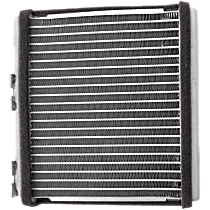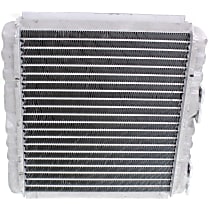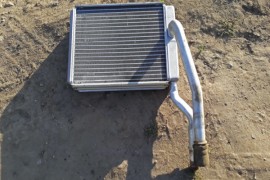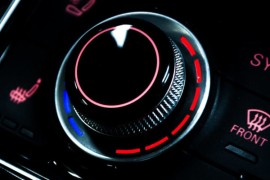{
"lazyNodes": false,
"abFitnotesFlag": false,
"abCrawlReviews": false,
"productOptionsCookie": false,
"orderDelayFlag": false,
"skipSessionCookie": false,
"covidMessage": false,
"fullTitleCookie": false,
"nrLoggerCookie": false,
"checkoutReviewCookie": false,
"productOptionSeqCookie": false,
"maintenanceFlag": false,
"bufferETACookie": false,
"multiShippingDiscountFlag": false,
"newFitmentFlag": false,
"surveyOptInFlag": false,
"crossSellFlag": false,
"skuMappingFlag": false,
"paySplitCookie": false,
"callDisableFlag": false,
"zipPaymentFlag": "u",
"hassleFreeReturn": false,
"lifetimeReplacement": false,
"cpn_off": false
}Nissan 300ZX Heater Cores
Shop Catalog
![]() WARNING: This product can expose you to chemical which is known to the State of California to cause cancer and birth defects or other reproductive harm. For more information go to www.P65Warnings.ca.gov.
WARNING: This product can expose you to chemical which is known to the State of California to cause cancer and birth defects or other reproductive harm. For more information go to www.P65Warnings.ca.gov.
![]() WARNING: This product can expose you to chemical which is known to the State of California to cause cancer and birth defects or other reproductive harm. For more information go to www.P65Warnings.ca.gov.
WARNING: This product can expose you to chemical which is known to the State of California to cause cancer and birth defects or other reproductive harm. For more information go to www.P65Warnings.ca.gov.
![]() WARNING: This product can expose you to chemical which is known to the State of California to cause cancer and birth defects or other reproductive harm. For more information go to www.P65Warnings.ca.gov.
WARNING: This product can expose you to chemical which is known to the State of California to cause cancer and birth defects or other reproductive harm. For more information go to www.P65Warnings.ca.gov.
![]() WARNING: This product can expose you to chemical which is known to the State of California to cause cancer and birth defects or other reproductive harm. For more information go to www.P65Warnings.ca.gov.
WARNING: This product can expose you to chemical which is known to the State of California to cause cancer and birth defects or other reproductive harm. For more information go to www.P65Warnings.ca.gov.
![]() WARNING: This product can expose you to chemical which is known to the State of California to cause cancer and birth defects or other reproductive harm. For more information go to www.P65Warnings.ca.gov.
WARNING: This product can expose you to chemical which is known to the State of California to cause cancer and birth defects or other reproductive harm. For more information go to www.P65Warnings.ca.gov.
Top Rated Products
Popular Products
Customer Guides
Simple Troubleshooting Tests for Nissan 300ZX Heater Core
The Nissan 300 ZX heater core is a real life saver when it comes to driving in cold weather. It uses the excess heat from the engine's combustion process to warm up the inside of your car's cabin. And because the heating system works through the proper function of the cooling system, when the cooling system malfunctions, the heating system also malfunctions. Here are some of the most common problems associated with a bad heater core and some simple troubleshooting tests you can perform:
Clogged heater core
A heater core will not work if it is clogged-it will not allow the antifreeze to flow within it. To check, disconnect the intake and exhaust hoses found between the radiator and the heater core by releasing the clamps. Use a pry tool to do so. Then use a garden hose to allow water into the intake hose into the heater core. If the water fails to come out of the exhaust hose, the core is definitely clogged and will need to be replaced immediately.
Leaking heater core
The Nissan 300ZX heater core is located near your car's dashboard. When it goes bad and leaks, you will not fail to notice a puddle of leaking antifreeze by the passenger side footwell, soaking up the carpet in the area. You will also notice the sweet smell of the leaking antifreeze. You can remove the heater core by taking off the dash using a screwdriver. When the heater core is out, inspect the radiator for any cracks and leaks.
Noisy heater core
A bad heater core will often make a lot of grinding, swooshing, clanking, and sometimes even gurgling noises. This is especially evident when you have just started your vehicle or just after the heater gets activated. The cause of this is most likely an air pocket inside the heater core. Another possible reason for this is having both the fuel tank and the radiator completely filled up with fuel and coolant, respectively.
Irregular heater function
When the heater core loses its integrity, the heater system is bound to function irregularly, going from cold to warm and then back to cold again. Your car's heater system will keep working like this unless you change the heater core immediately.
The Nissan 300ZX heater core is the heart of your car's heating system, which keeps you warm when driving in cold weather. But if it is plugged or dirty, you won't be able to enjoy a comfortable drive because of the malfunctions brought about by debris or dirt. To avoid any inconvenience rooted in heater cores, here are a few easy tips you can follow to keep the part fully functional:
Do some back-flushing.
To prevent the heater core from becoming plugged, it is important to clean it regularly. The process of cleaning the heater core is called back-flushing. You can do this by disconnecting the inlet and outlet hoses of the heater core. But first, make sure you have your car parked on a level surface. Attach an extra length of heater hose to the outlet hose and place the inlet hose down in a bucket under the engine. Take the garden hose and place the sprayer at the end of the extended outlet hose. When the connections are secure, carefully shoot a few bursts of water into the outlet hose. This will remove the dirt that may have built up inside the part. Take care that you don't tightly seal the garden hose to the outlet hose because the water pressure in your area might damage the heater core or cause a leak.
Keep shooting water into the outlet hose until the water that comes out of the other end and onto the bucket is clean. Once done, hold up one of the hoses and pour in a 50-50 solution of coolant and water until the fluid flows out the other end. The air pockets should also be done away with by this time. When the mixture of coolant and water starts coming out of the other end, quickly re-attach that hose near the thermostat housing and then re-attach the other one near the water pump. To finish, top off the radiator with the same solution.
Maintain the cooling system.
The heating system doesn't actually need a special, regular maintenance procedure. Since it is connected to the cooling system, a regular maintenance of the cooling system will, in consequence, give it proper care. This mainly consists of changing the coolant every 60,000 miles.















